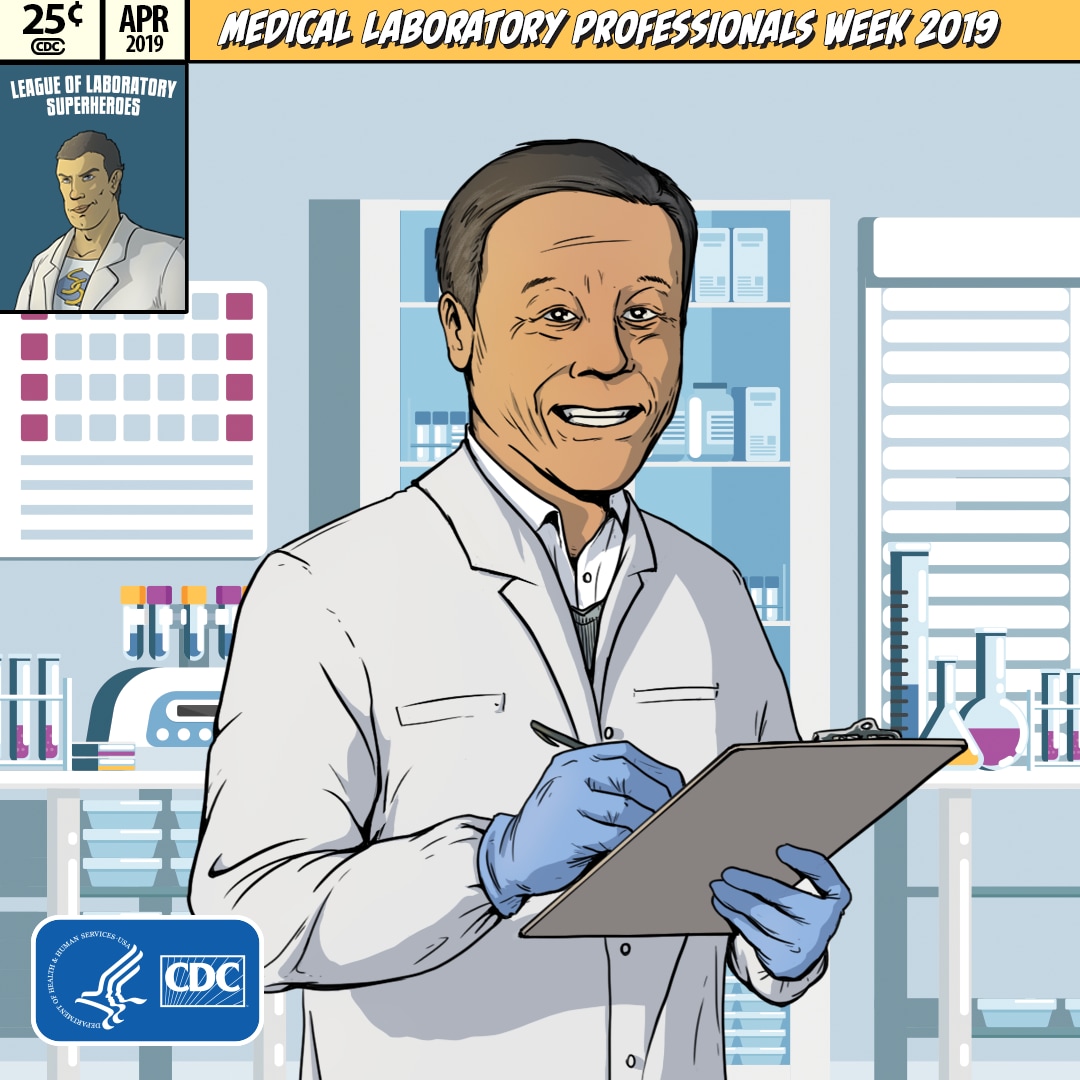At a glance
Learn more about laboratory professional James Pusavat.

About James Pusavat
Spotlight
When a patient staggered into the emergency department of the Kern Medical Center, a county hospital in the heart of town, he was suffering from a headache, fever, confusion, and other serious symptoms. A physician suspected it could be bacterial meningitis and obtained a specimen of spinal fluid for laboratory tests.
Standard tests, like latex agglutination, performed by processing the specimen to reveal what is causing the infection, came back negative. James, an experienced laboratory professional, spotted a warning sign in the cytospin smear on the glass slide under his microscope: lots of white blood cells. Our bodies produce these to fight bacterial infections. Provoked by this suspicious activity, he methodically inspected every millimeter of the slide and discovered a powerful nemesis: three pairs of kidney-bean-shaped bacteria, Neisseria meningitidis, which is deadly and contagious.
Since he was the laboratory's Microbiology Supervisor, James immediately alerted the attending physician with a galvanizing test report, which enabled the physician to initiate treatment for the patient right away. Next, James notified the Kern County Health Department to trigger contact tracing. This alerted health department staff they should find out who the patient might have been in contact with in this small town of just 380,000 residents, so that life-saving preventive medicine could be given to the patient's contacts.
James protected his colleagues by alerting the infection control department in his hospital to follow up with hospital staff who cared for the patient. He also labeled the specimens to warn of their biosafety danger so staff would not work with the specimens in an uncontained space, and would avoid exposure to a deadly illness.
Finally, James followed hospital protocol and state regulations by submitting the isolate of bacteria to the state's Laboratory Central Services Branch. Staff members in the public health laboratory confirmed the sample was Neisseria meningitidis, and took further safety measures to prevent an outbreak.
This is just one of many examples of how this hero-in-a-lab coat saves lives in Kern County. Furthermore, he has mentored a legion of laboratory professionals, building the workforce of his local laboratory system to foster the future.
James retired from Kern County in 2014, after working there since earning his Medical Technology degree in 1980. He now works part-time at Adventist Health Bakersfield, a 254-bed not-for-profit health care organization. He continues his passion for training the next generation of laboratory superheroes while keeping his skills sharp at the bench.
